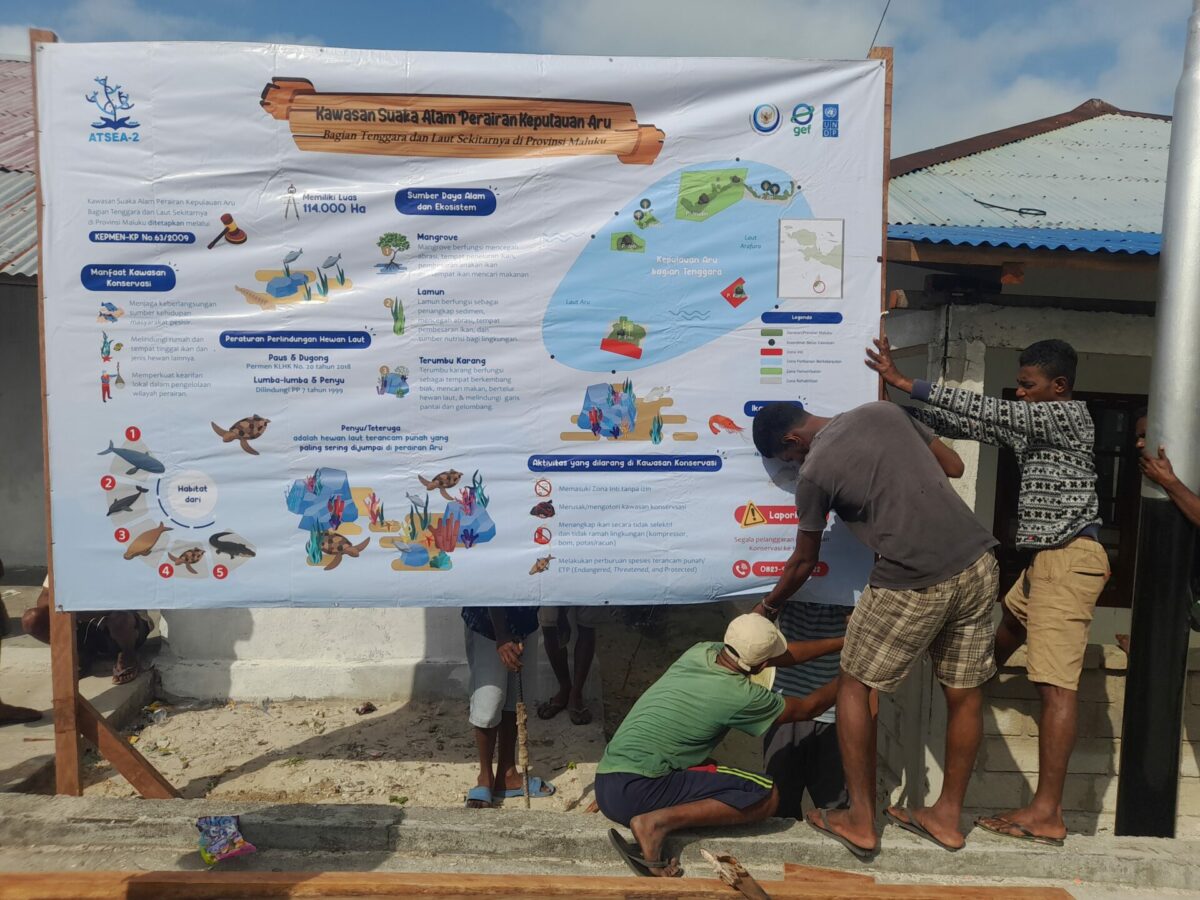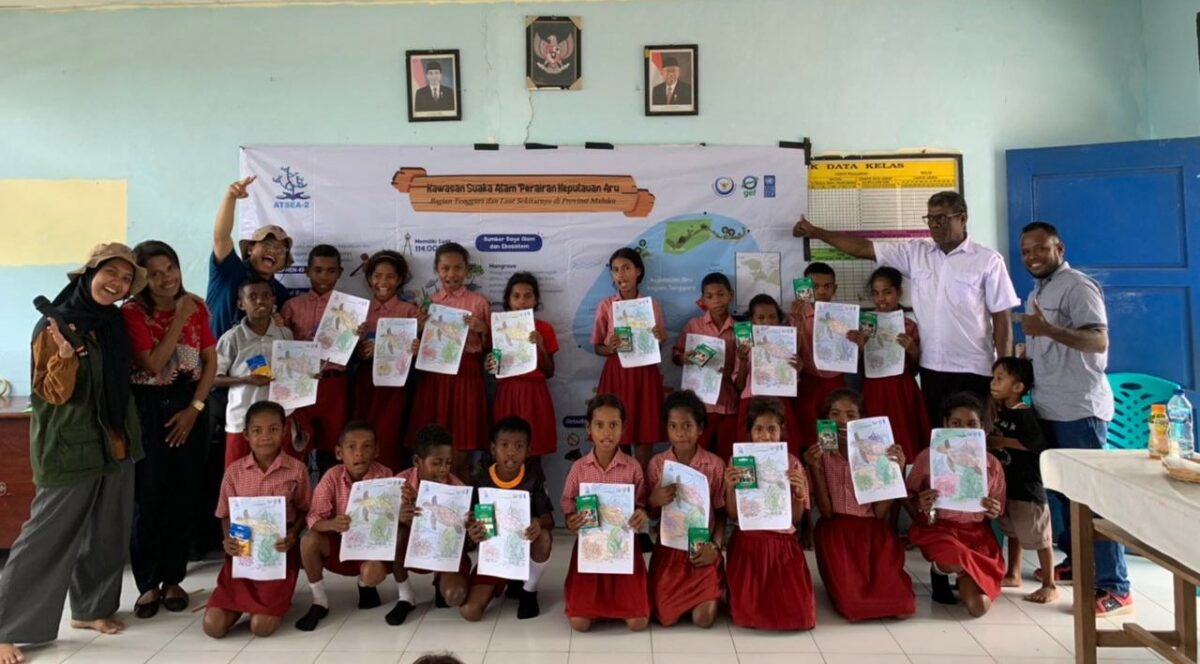Apara Village and Karey Village, located within the Southeast Aru Marine Protected Area (MPA), hold administrative and cultural significance. These communities primarily comprise fisherfolks whose livelihoods revolve around the MPA. As a result, there is a distinct correlation between community activities and the effectiveness of conservation efforts.
Recognising the pivotal role of these villages, the ATSEA-2 Project has embarked on a series of community outreach initiatives aimed at enhancing management effectiveness in the Southeast Aru MPA. Conducted from August to September 2023 and involving 268 beneficiaries, the initiatives included various government officials at the village and subdistrict level, along with community-led surveillance groups (Kelompok Masyarakat Pengawas/Pokmaswas) and local communities.
These initiatives involve the creation and distribution of educational materials like calendars, posters and banners; materials which are strategically placed in villages and shared with relevant agencies to ensure accessibility, reaching both local communities and government entities engaged in community interactions. Additionally, the ATSEA-2 Project conducted focus group discussions (FGD) and persuasive dialogues with various community groups, using these materials to convey vital information and gather insights into local activities within the Southeast Aru MPA.
Challenges in Sea Turtle Conservation
These discussions have revealed a concerning reality in these villages. In Karey Village, some individuals continue to capture sea turtles for meat consumption and sea turtle egg harvesting, employing methods like netting and manual capture when sea turtles approach their vessels at sea. Unfavourable weather conditions often lead to villagers collecting sea turtle eggs for survival.
Similarly, in Apara Village, people catch sea turtles for personal consumption and resale, using nets and spears, and even killing sea turtles aboard their boats for meat to sell in the village. These activities persist due to inadequate surveillance, a lack of education about the consequences of sea turtle consumption, ineffective communication of regulations against sea turtle catching and egg collection, and the lack of a government presence – some elements of the existing security forces have even been implicated in the sea turtle trade.
Raising Awareness and Securing Community Commitment

The ATSEA-2 Project’s outreach initiatives are yielding encouraging results. Villagers of all ages are becoming increasingly aware of the consequences of sea turtle consumption. Importantly, they are beginning to adhere to regulations that prohibit such activities. “I have just learned that consuming sea turtles is unhealthy,” said Samaila, the head of the Village Consultative Body (Badan Permusyawaratan Desa/BPD) and a member of Pokmaswas Bintang Timur. “It’s crucial to prevent the harmful practice of sea turtle consumption in Karey Village from affecting the health of our families, including the children.”
This improved awareness is evident in the villagers’ dedication to reporting sea turtle-related activities to the authorities. In both villages, a notable change in behaviour has been observed, with communities promptly informing Pokmaswas about instances of bycatch or illegal sea turtle catches. This represents a positive transition towards adopting sustainable practices and enhancing conservation efforts.
Empowering the Next Generation for Conservation

Engaging with children is a crucial aspect of conservation efforts. In Apara Village, children participated in a creative sea turtle-themed colouring competition, using materials provided by the Project, which was combined with direct verbal education. Similar activities were held in Karey Village, where the ATSEA-2 Project engaged with students at Karey Christian Elementary School.
Thalib, a representative of Pokmaswas Bintang Timur from Karey Village, highlighted the pivotal role of the younger generation in preserving the marine environment. He stated, “you are the future generation of Karey Village, you must preserve the marine environment, especially marnam and kalabo (Karey Village’s local language for green and hawksbill turtles)”.
The efforts of the ATSEA-2 Project have been instrumental in raising awareness in Apara Village and Karey Village. Nevertheless, continued support and collaboration with government agencies will be essential to ensuring long-term success in turtle conservation around the Southeast Aru MPA.
By Iriansyah


